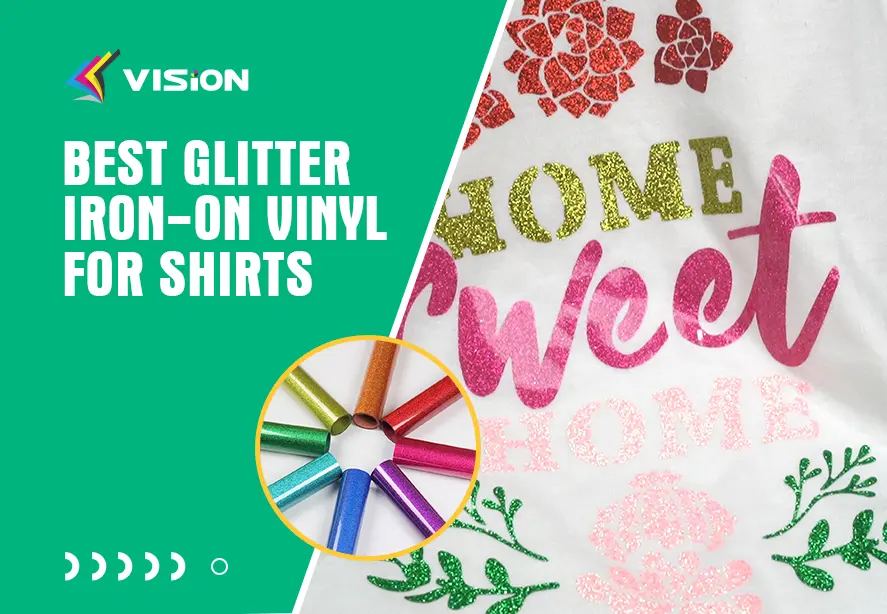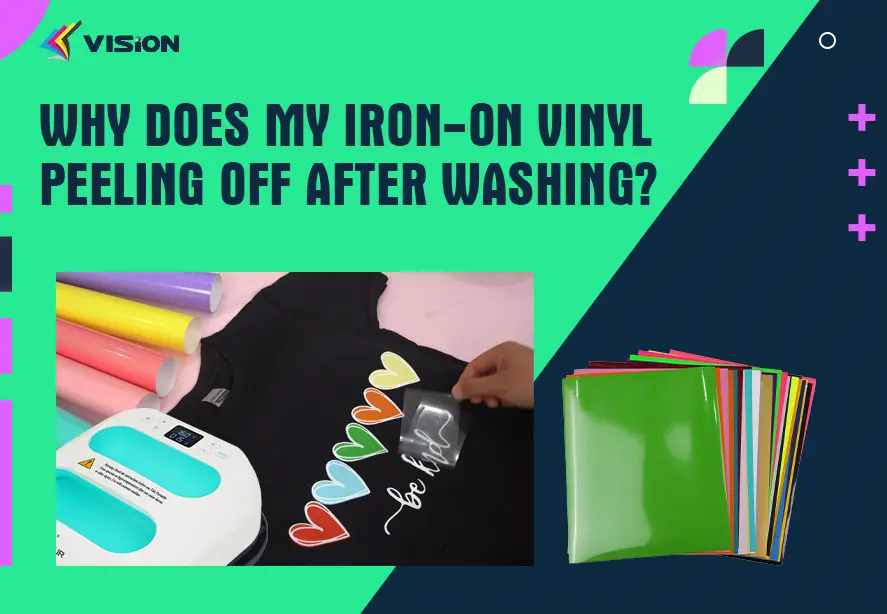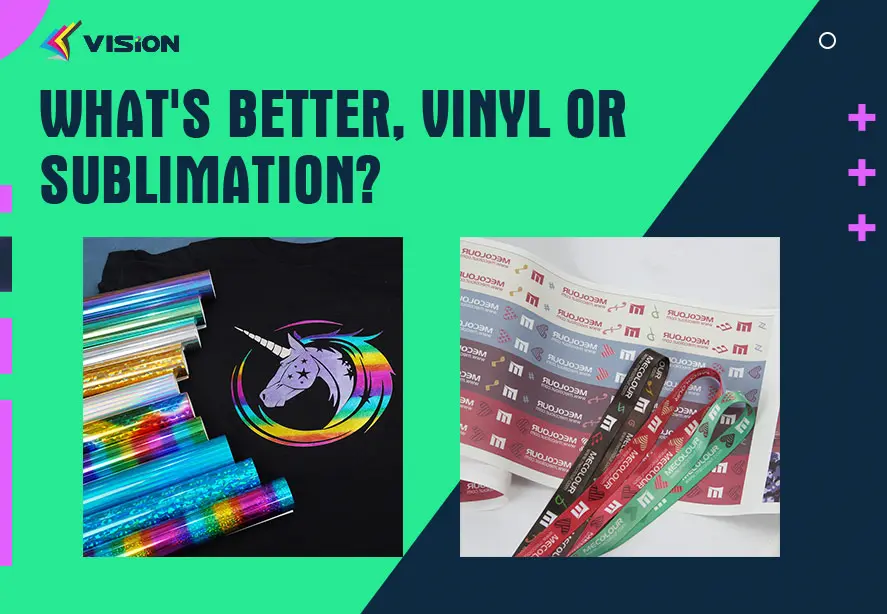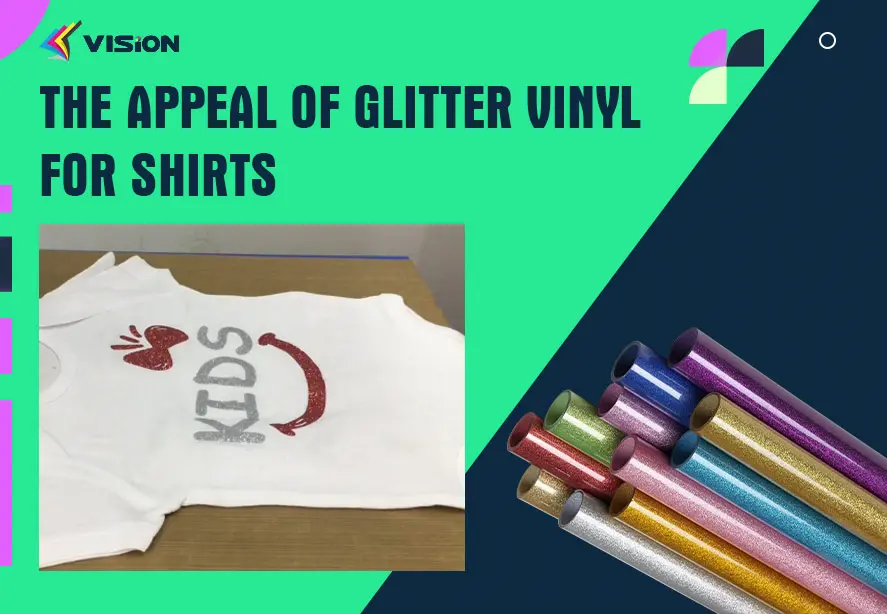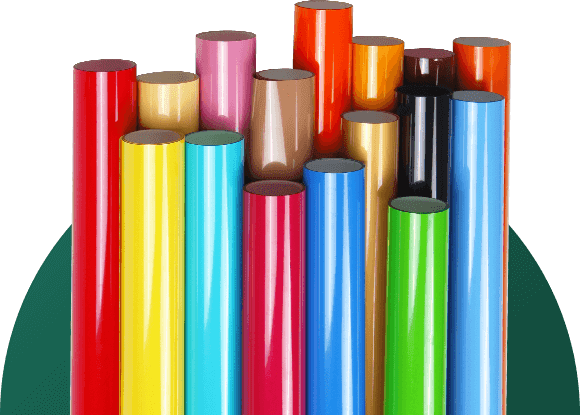How to Prevent Peeling and Cracking with Heat Transfer Vinyl?
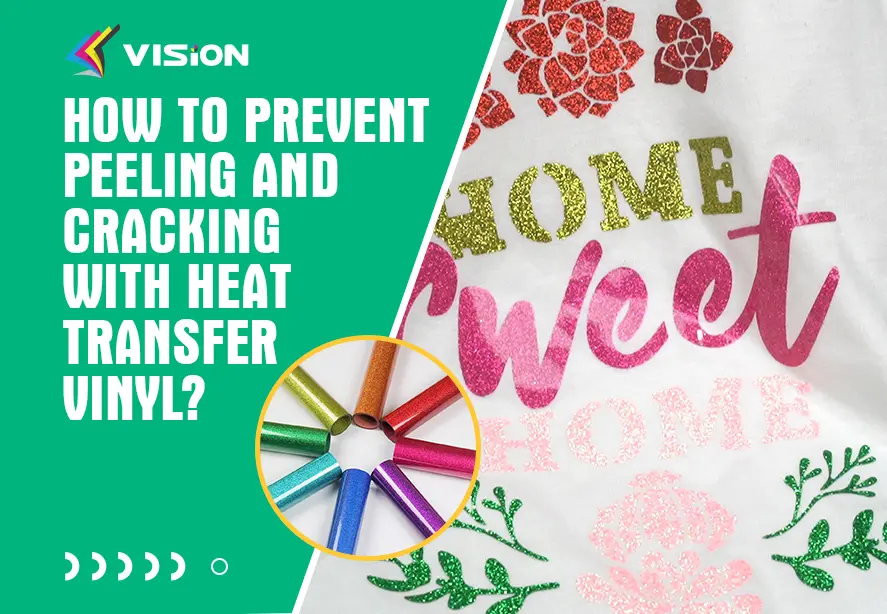
Heat Transfer Vinyl is an essential material for custom apparel, offering vibrant colors and durability when applied correctly. However, peeling and cracking can ruin the look of your designs, leading to customer dissatisfaction and wasted materials. To ensure long-lasting results, follow these expert techniques to prevent peeling and cracking with HTV.
Tips to prevent HTV peeling and cracking
1. Choose High-Quality Heat Transfer Vinyl
Not all HTV materials are created equal. Inferior vinyl may not adhere properly, increasing the chances of peeling and cracking. Always opt for reputable brands that offer premium-grade, stretchable, and durable HTV designed to withstand washing and wear.
Factors to Consider When Choosing HTV:
Material Compatibility: Ensure the vinyl is suitable for the fabric type (cotton, polyester, blends, etc.).
Flexibility and Stretch: Some HTVs are designed for stretchy fabrics and won’t crack under tension.
Thickness and Adhesion: A good-quality HTV should have a strong adhesive layer to ensure proper bonding.
2. Use the Right Fabric for HTV Application
HTV adheres best to certain fabrics, while others can pose challenges. Using unsuitable materials increases the risk of peeling and cracking over time.
Best Fabrics for HTV:
- 100% Cotton
- Polyester and Cotton Blends
- Tri-Blend Fabrics
- Spandex or Lycra (with

Fabrics for HTV Application
Fabrics to Avoid or Test Before Use:
❌Nylon (requires special HTV)
❌Coated or Water-Repellent Fabrics
❌Heat-Sensitive Materials (may melt under high temperatures)
Related:
What fabric is best for heat transfer vinyl?
3. Prepare the Fabric Before Application
Proper fabric preparation is crucial for a strong bond between the vinyl and material. Follow these steps to optimize adhesion:
Pre-wash the Fabric: Removes any dirt, oils, or chemicals that could prevent proper adhesion. Avoid fabric softeners, as they create a barrier between the vinyl and fabric.
Iron or Press Before Applying HTV: Wrinkles can cause uneven adhesion, leading to peeling after washing.
Use a Lint Roller: Eliminates dust and fibers that may interfere with the HTV bond.
4. Adjust the Heat Press Temperature Correctly
One of the most common reasons for HTV peeling is using the wrong temperature during application. If the temperature is too low, the adhesive will not activate properly. If it’s too high, the vinyl may shrink, distort, or crack.
Recommended Temperature Settings for HTV:
| HTV Type | Temperature | Time | Pressure |
| Standard HTV | 305°F (150°C) | 10-15 sec | Medium |
| Glitter HTV | 320°F (160°C) | 15-20 sec | Firm |
| Stretch HTV | 320°F (160°C) | 15 sec | Medium |
| Metallic HTV | 285°F (140°C) | 10-12 sec | Medium |
Always check the manufacturer’s guidelines for specific temperature and time settings.
5. Apply the Right Pressure When Pressing
Using too little pressure can result in weak adhesion, causing peeling, while too much pressure can distort the vinyl and lead to cracks. A medium to firm pressure is generally recommended for most HTVs.
How to Ensure Proper Pressure:
If using a manual heat press, adjust the pressure settings according to the fabric thickness.
If using a household iron, press down firmly, applying even pressure across the design.
Perform a peel test to check adhesion before removing the transfer sheet completely.
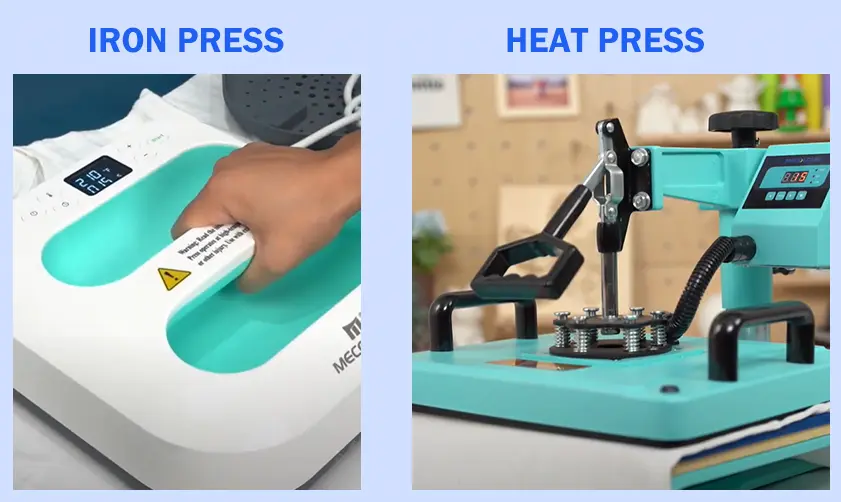
iron press and heat press
6. Use the Correct Peeling Method (Hot, Warm, or Cold Peel)
HTV manufacturers specify whether to peel the carrier sheet hot, warm, or cold. Incorrect peeling techniques can cause premature lifting of the design.
Hot Peel: Remove the backing immediately after pressing while still hot.
Warm Peel: Wait a few seconds before peeling to allow slight cooling.
Cold Peel: Let the vinyl cool completely before peeling for optimal adhesion.
Check the manufacturer’s instructions to determine the correct peeling method for your specific HTV.
7. Avoid Overlapping Layers Incorrectly
When layering multiple colors of HTV, improper application can cause peeling between layers.
Best Practices for Layering HTV:
Start with the base layer and press for 3-5 seconds to prevent over-pressing.
Add each additional layer, pressing for another 3-5 seconds.
The final layer should be pressed for the full recommended time to ensure complete adhesion.
Using specialty HTV like glitter or foil as the top layer only (not as a base layer) prevents adhesion issues.
8. Allow Vinyl to Cure Before First Wash
Washing too soon can weaken the bond, leading to peeling. It’s crucial to wait at least 24-48 hours before the first wash to allow the adhesive to cure properly.
Washing and Care Instructions to Prevent Peeling & Cracking:
Turn garments inside out before washing.
Use cold water and mild detergent.
Avoid fabric softeners and harsh chemicals.
Tumble dry on low or air dry to prevent heat damage.
Do not dry clean HTV garments.
9. Store HTV Properly Before Use
HTV can degrade over time if stored incorrectly. Poor storage conditions may cause adhesion problems, leading to peeling after pressing.
Best Storage Practices for HTV:
- Keep HTV flat and rolled with the carrier sheet facing out to prevent curling.
- Store in a cool, dry place away from direct sunlight and humidity.
- Avoid exposing HTV to extreme temperatures, as it may affect adhesion properties.
10. Test Before Full Production
Before pressing large orders, conduct a test press on a sample fabric to ensure proper application settings. This minimizes costly mistakes and ensures high-quality results.
Key Aspects to Test:
- Adhesion strength after washing
- Stretchability of the design
- Compatibility with the fabric
- Accuracy of temperature and pressure settings
By following these expert techniques, you can prevent peeling and cracking with Heat Transfer Vinyl, ensuring long-lasting, professional-quality designs that withstand the test of time.
Related:
10 Pro Tips for Perfect Heat Transfer Vinyl Application
Which Iron-On Vinyl is Best for Shirts?
How to choose the perfect Heat Transfer Vinyl for T-Shirts?
Essential Tools for Perfect Heat Transfer Vinyl
Avoid the Pitfalls of Heat Transfer Vinyl Application



